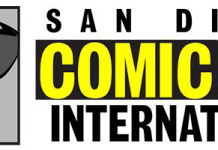
The nonprofit that puts on Comic-Con has a longstanding reluctance to discuss its affairs or even, for the most part, to share more than rudimentary details about its leaders. “It has always been about the event, and not about the people who do the event,” said David Glanzer, the group’s director for marketing and public relations.
But during an interview at the organization’s headquarters in mid-June, Mr. Glanzer agreed to part with past practice to address questions about its structure, resources and prospects. In addition to Comic-Con, the organization runs the similar but significantly smaller WonderCon in Anaheim, Calif.
He described a vibrant, if deeply conservative operation — it has largely eschewed growth in favor of preservation — that behaves less like a business or conventional nonprofit than a collective of shadowy guardians. The group began almost by accident, with 300 friends and acquaintances meeting in 1970 to swap notes and artifacts under the aegis of the comic strip artist Sheldon Dorf in the basement of San Diego’s U.S. Grant Hotel.
Among the nuggets gleaned: according to tax documents, CCI has a warchest of some $16.4 million as insurance against a catastrophe canceling the show with money left over to pay employees and get the show running again.
Other tidbits: the con costs $12 million a year to run and the 180 degree video screens in Hall H that Warner Bros. is expected to use for their panel this year cost $600,000 to turn on.
While the CCI staff may be viewed as “shadowy” to some, Rogers does do the annual “talk back” panel at all the CCI shows, and if you’ve ever dealt with the con on a business level, you know the staff is incredibly professional and helpful in getting stuff done. Perhaps the launch of next year’s SVOD service with Lionsgate will blow the doors open a little more, but the way CCI does business seems to be working.








wow, legally they are now in quite a pickle. By revealing that they have a profit, they can no longer BE a non profit. They had better spend that money down before fiscal year…
The video screens in Hall H cost six hundred thousand to turn on? I think not. Some seriously screwed accounting was used to get that figure. Or Glanzer didn’t hear it right.
The fact they have a profit isn’t news, you can see that in their 990 form they file every year. You can see how they spend their money that way. The same form shined light on the whole Denver Comic Con debacle. They claim their nonprofit status soley by the convention’s panels which are “educational.” That’s the part that baffles me.
@Teve: My understanding on non-profit isn’t that an organization isn’t allowed to accrue profit, it is that the profit stays within the organization for the purpose of furthering the organization’s mission rather than distributing that profit to its board of directors etc. (Note that distribution of profit is different from paying a contractual salary to directors.) Keeping a large reserve to allow the CCI event to re-start even in the aftermath of an unexpected cancellation is arguably in keeping with the mission of the organization (especially given the kinds of expenses necessary to run the event).
As a non-profit, they have to file paperwork with the IRS. While the extent of their reserve assets are a revelation to the general public, I doubt very much that it is news to the IRS.
There’s no prohibition about non-profits accruing surplus revenue, nor is there any requirement that a non-profit serve some sort of educational purpose. It’s pretty easy to find out this kind of information. Just for starters:
https://en.wikipedia.org/wiki/Nonprofit_organization
@Ben
That’s not quite correct about the “educational purpose.” Depending on the type of nonprofit is what they need to do to keep the status/qualify. A C3 is different than a C4 in what they have to do with their money, and what types of activities they can partake in. Part of that nonprofit is their educational component.
In an interview I never ran here was the response to that exact question:
2) As a non-profit, what are you required to do to keep that status?
SDCC must continue to operate as a non-profit corporation. To maintain tax exempt status, SDCC must continue to provide educational services. SDCC’s educational services include several hundred hours of panels, programs and workshops focusing on all aspects of comics and related popular art forms.
This is all available through their tax filings. Form 990. It includes salaries.
Guidestar has the best data it seems.
Search by their corporate name: “SAN DIEGO COMIC CONVENTION”
Here’s a filing from 2012 (9/2012 – 8/2013): http://www.guidestar.org/FinDocuments/2013/953/072/2013-953072188-0a7a2126-9.pdf
In 2013, they made $8,295,991 from “memberships”. Tradeshow sponsorship was $1.183M; tradeshow income: $4.625M.
Total revenue: $14.976M. Total expenses: $12.106M End of year Net Assets: $16.445M
(Take a look at Schedule O to discover what they spend on “other expenses”! The Eisner Awards cost $8,790?)
Their mission statement: “Comic-Con International: San Diego is a nonprofit educational corporation dedicated to creating awareness of, and appreciation for, comics and related popular artforms, primarily through the presentation of conventions and events that celebrate the historic and ongoing contribution of comics to art and culture.”
It appears that they are a 509(a)(2) nonprofit. (They checked 501(c)(3) under “tax-exempt status”.)
“An organization that normally receives (1) more than 33 1/3% of its support from contributions, membership fees, and gross receipts from activities related to its exempt functions-subject to certain exceptions, and (2) no more than 33 1/3% of its support from gross investment income and unrelated business taxable income (less section 511 tax) from businesses acquired by the organization after June 30, 1975 See section 509(a)(2).”
—
I don’t criticize them for having a large war chest, or for being “mysterious”. (Or for the usual fan complaints of hotels, tickets, a shrinking emphasis on comics..) It’s all part of the public record, thanks to the IRS.
My constructive criticism is that they seem to do very little to promote their mission outside of the three conventions they run.
(A mission, by the way, which is duplicated by many for-profit corporations in this country.)
Looking at the San Diego area, what is the legacy of Comic-Con?
Where is the amazing community of comics creators which exist in other cities?
Do local universities and public schools actively teach comics? Were they at the forefront, given the stature and prominence of CCI?
Why did it take them 40+ years to partner with the San Diego Public Library, located downtown since 1882?
Where is the community outreach? School visits? Tables for local art schools? Summer arts programs teaching kids how to make comics?
Do they have an employee responsible for community outreach?
Do they use their incredible rolodex of industry professionals to create a “speakers bureau” of creators willing to do school visits nationwide?
Why isn’t there a comics version of the Clarion Writers’ Workshop at San Diego State University?
(Or at the very least, shuttles and housing during Comic-Con?)
Ten years from now, will we see better community engagement from CCI? I hope so.
—
A big hypothetical: What would happen if CCI lost their non-profit status?
Does that affect their sweetheart rental discount with the convention center?
What would their tax burden be?
Were I they? I’d be very worried about Obama finding out about this. Could bring this whole town of cards crashing down.
Comments are closed.